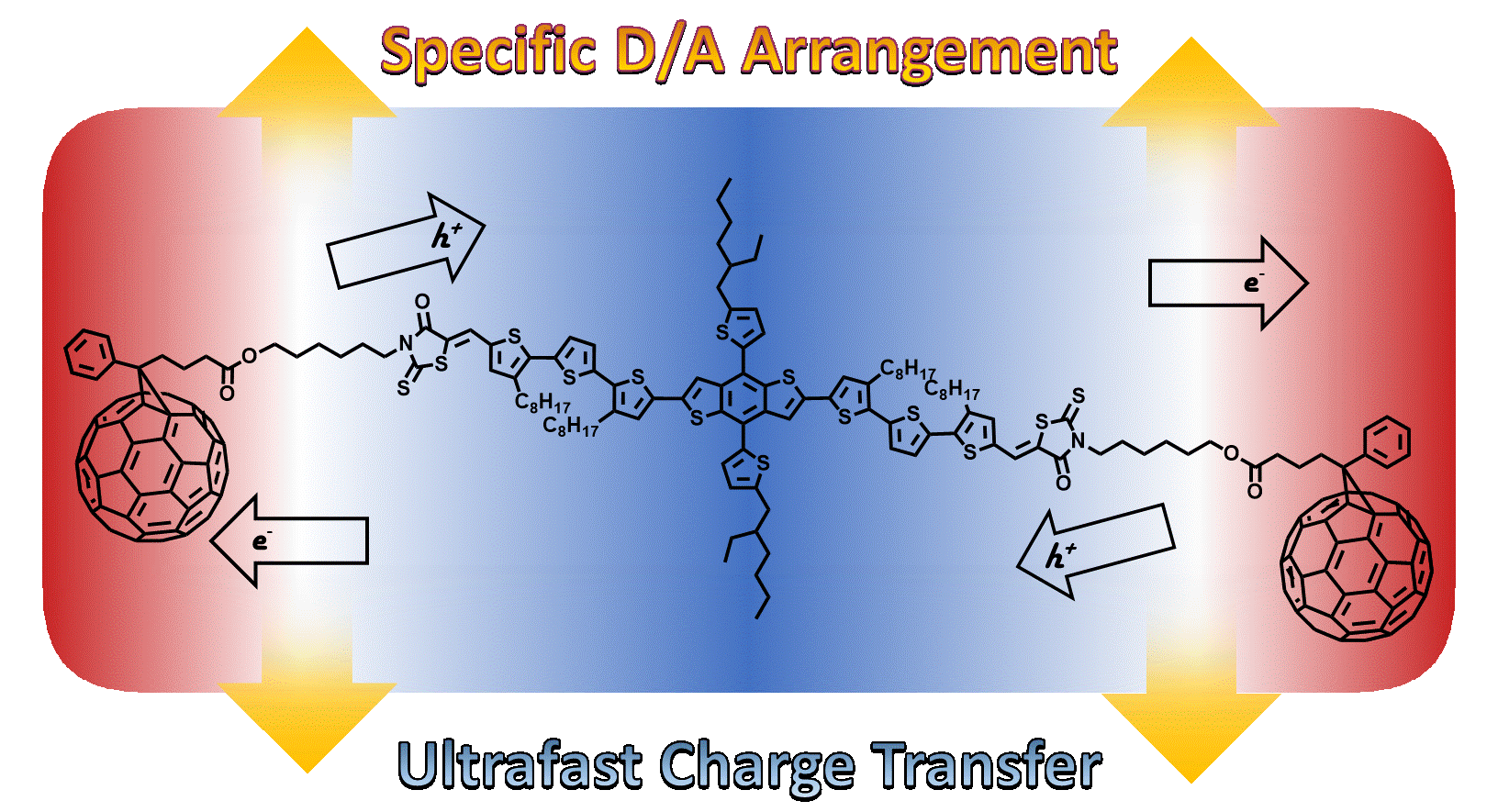
Thanh Luan Nguyen(Post doc.)
A new donor (D)–acceptor (A) conjugate, benzodithiophene-rhodanine–[6,6]-phenyl-C61 butyric acid methyl ester (BDTRh–PCBM) comprising three covalently linked blocks, one of p-type oligothiophene containing BDTRh moieties and two of n-type PCBM, is designed and synthesized. A single component organic solar cell (SCOSC) fabricated from BDTRh–PCBM exhibits the power conversion efficiency (PCE) of 2.44% and maximum external quantum efficiency of 46%, which are the highest among the reported efficiencies so far. The SCOSC device shows efficient charge transfer (CT, ≈300 fs) and smaller CT energy loss, resulting in the higher open-circuit voltage of 0.97 V, compared to the binary blend (BDTRh:PCBM). Because of the integration of the donor and acceptor in a single molecule, BDTRh-PCBM has a specific D–A arrangement with less energetic disorder and reorganization energy than blend systems. In addition, the SCOSC device shows excellent device and morphological stabilities, showing no degradation of PCE at 80 °C for 100 h. The SCOSC approach may suggest a great way to suppress the large phase segregation of donor and acceptor domains with better morphological stability compared to the blend device.

http://onlinelibrary.wiley.com/doi/10.1002/adfm.201702474/full
 Maskless Arbitrary Writing of Molecular Tunnel Junctions
Maskless Arbitrary Writing of Molecular Tunnel Junctions
 Lanthanide metal-assisted synthesis of rhombic dodecahedral M...
Lanthanide metal-assisted synthesis of rhombic dodecahedral M...

















